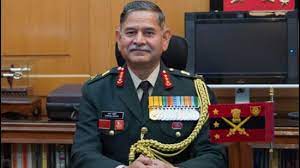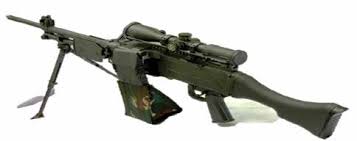An Update by Ritika Behal and Kavita Nagpal
Defence Program: Landing Platform Docks (LPDs) for Indian Navy
RFI Issued: 24 August 2021
Quantity: 4 (Four)
Estimated Cost: Rs. 20000 Crores ($3 Billion) approx.
Delivery Window: The first vessel to be delivered within maximum of 60 months from the date of signing the contract; followed by delivery of one vessel every 12 months
Category: Buy (Indian IDDM)/ Buy (Indian)
Likely Indian Contenders:
- L&T Shipbuilding (L&T)
- Cochin Shipyard Limited (CSL)
- Garden Reach Shipbuilders & Engineers (GRSE)
- Mazagon Dock Limited (MDL)
Prospective foreign OEMs
- Naval Group of France
- Navantia of Spain
- Fincantieri of Italy
- JSC Zelenodolsk Design Bureau of Russia
- Hanjin Heavy Industries of South Korea
Current Status: RFI has been issued; a Request for Proposal / tender is most likely to be issued next year (2024)
Project Brief
Indian Navy (IN) has a long impending demand since 2004 for the procurement of amphibious warfare vessels, including Landing Platform Docks (LPDs) to augment its capabilities of amphibious warfare, disaster-response management and evacuation of civilians and personnel.
In the past, multiple initiatives had been undertaken in procuring these types of naval vessels; however, such measures have been frequently delayed, on account of varying reasons.
Noteworthy, the IN currently operates one landing platform dock - INS Jalashwa, an ex-Austin-class amphibious transport dock, which was purchased from the United States Navy (USN) in 2007.
Finally, in 2011, the IN established the Multi-Role Support Vessel Program (MSRV), an initiative to acquire four landing platform docks from a foreign naval firm.
Under the initiative, India issued a Request for Information (RFI) to multiple foreign naval firms, under the ‘Buy and Make (Indian)’ category.
Subsequently, in 2013, the service issued a Request for Proposal (RFP) to four domestic shipbuilders - L&T Shipbuilding (L&T), ABG Shipyard (ABG), Pipavav Shipyard Limited (RDEL) and Hindustan Shipyard Limited (HSL).
As per the RFP issued, the winner of the bid would be requested to build two landing platform docks, while the remaining two were to be built by the state-owned HSL.
Under this program, which was estimated to be worth $2.65 billion, the three private shipyards tied up with different foreign conglomerates - L&T allied with the Spainish-based Navantia, RDEL allied with the Frech-based DCNS (now Naval Group), while ABG tied with the American-based Alion.
However, ABG suffered from severe financial constraints, and consequently was later disqualified from the tender on account of its financial problems.
L&T and RDEL were the only shipyards which met the technical and financial eligibility criteria in the tender; however, RDEL too suffered from increasing financial debts - which made it unsuitable for participating in the tender; this left L&T as the only prospective vendor in the bid.
In 2017, the Defence Acquisition Council (DAC), the arms acquisition body of India’s Ministry of Defence (MoD) under the Chairmanship of Defence Minister, approved the procurement of the four Landing Platform Dock vessels.
Concurrently, both L&T and RDEL submitted revised commercial bids to build all the four vessels, in stark contrast to the specifications of the 2013 tender, which regulated that the selected private shipyard must build only two vessels.
The competition narrowed down to two contenders - an alliance of L&T-Navantia offering the Juan Carlos I-class amphibious assault vessel and another alliance of RDEL-DCNS offering the Mistral-class amphibious assault vessel.
In 2019, after a string of delays in the project, the IN approached the Indian Ministry of Defence (MoD) to cancel the tender, then worth USD $3 billion.
With ABG disqualified from competing and RDEL on the brink of bankruptcy, L&T prevailed as the only qualified contender capable of handling the project.
Nonetheless, the MoD favored several suggestions of scrapping the tender, in order to circumvent a single-vendor situation.
And finally in September 2020, the MoD scrapped the tender, then worth Rs 20,000 crore given the tender’s prolonged inactivity and lack of action.
With the termination of the contract, the IN reportedly planned to initiate a fresh bidding process for the acquisition of a new fleet of landing platform docks, with new qualitative requirements.
Subsequently, on 24th August 2021, the MoD issued a new RFI under Buy (Indian IDDM)/ Buy (Indian) initiative for the procurement of four landing platform docks to domestic Indian shipyards, under guidelines of its ‘Defence Acquisition Procedure 2020 (‘DAP-2020).
The procurement is likely to cost Rs 20000 Crores ($3 Billion) approx.
The RFI envisages that the competing Indian shipyards must seek transfer-of-technology (ToT) from a foreign naval shipbuilder, and that the four prescribed vessels must be built in India, with a proportion of indigenous content.
Further, according to the RFI, a Request for Proposal (RFP) will be issued to the shipyards who have completed the feasibility examination and fulfilled all requirements needed as mentioned in the RFI.
The first vessel built should be ready for delivery within 60 months of the contract being signed, while the remaining three should be delivered at one-year intervals.
From its inception in 2013 till 2020, the MRSV program underwent seven extensions and one re-submission of bids.[30]
Potential shipyards/contenders:
Cochin Shipyard Limited (CSL)
- L&T Shipbuilding (L&T)
- Cochin Shipyard Limited (CSL)
- Garden Reach Shipbuilders & Engineers (GRSE)
- Mazagon Dock Limited (MDL)
Prospective foreign OEMs
- Naval Group of France which may offer the Mistral-class amphibious warfare vessel.
- Navantia of Spain which is likely to offer Juan Carlos-I amphibious warfare vessels.
- Fincantieri of Italy which may offer a variant of the Trieste landing helicopter dock
- JSC Zelenodolsk Design Bureau of Russia which is likely to offer an export variant of Project 23900 amphibious warfare vessel.
- Hanjin Heavy Industries of South Korea which is likely to offer Dokdo-class amphibious warfare vessel.
As of now, it has been confirmed by José Porto, managing director of Navantia India that the company will bid for the four anding Platform Dock program along with Larsen and Toubro (L&T).
Operational Requirements of Landing Platform Dock (LPDs)
The Landing Platform Dock (LPDs) shall be capable to transport and land ashore a combined arms force and to sustain their operations ashore.
Inherent to this capability would be a capacity to embark and sustain a body of troops at sea for prolonged durations, to embark, stow onboard and discharge at the objective the full range of the combat cargo required for undertaking and sustaining the operations ashore and to enable operation of multiple means of ship to shore movement of troops and cargo.
Further, LPDs will undertake Out of Area Contingencies (OOAC) through its inherent capability to transport and deploy forces ashore, ability to arrive quickly in area, and sustain operations at sea for prolonged durations.
Also, LPDs will act as Command Centre for the Commander, Amphibious Task Force, Landing Force Commander and the Air Force Commander and also undertake Humanitarian Assistance and Disaster Relief Missions.
Additionally, LPDs will also act as mother ship for unmanned capability and to support operation/ exploitation of all dimensions of futuristic unmanned vehicles/ platforms/ equipment. The LPDs will also provide medical facilities for treatment of battle casualties.
Quantity Required and Anticipated Delivery Time Frames of Landing Platform Dock
Four LPDs are proposed to be acquired.
The anticipated delivery time lines for the first vessel is maximum of 60 months followed by delivery of one vessel every 12 months.
Vendors are to indicate their comments on the build period and timelines for delivery.
Technical Specifications of Landing Platform Dock
Intended Role of LPDs:
Primary Role
(a) To Influence the Land Battle through a viable capability to transport and land ashore a combined arms force and to sustain their operations ashore.
(b) To Undertake Out of Area Contingencies (OOAC) through its inherent capability to transport and deploy forces ashore, ability to arrive quickly in area, and sustain operations at sea for prolonged durations.
(c) To Act as Command Centre for the Commander, Amphibious Task Force, Landing Force Commander, and the Air Force Commander.
(d) To undertake Humanitarian Assistance and Disaster Relief Missions.
(e) To act as mother ship for unmanned capability and to support operation/ exploitation of all dimensions of futuristic unmanned vehicles/ platforms/ equipment.
Secondary Role
(f) To undertake fleet support functions through underway replenishment capability and comprehensive workshop facilities.
(g) To provide medical facilities for treatment of battle casualties.
Compliment and Accommodation
- a) Ship’s Crew - 60 officers (30 ship’s officers, another 30 officers of joint staff and additional attachments) and 470 sailors (Total 530). Embarked Personnel - 900 troops.
(b) Additional accommodation facilities for 20 % women officers and 15 % women sailors/ troops of the total strength.
Length: < 200 m.
Beam: Commensurate with the length and tonnage of the ship
Draught: < 08 m in full load conditions without ballasting.
Displacement: Commensurate with length and draught of ship.
Propulsion: Electric Propulsion (Integrated Full Electric Propulsion (IFEP)/ Hybrid) with shafting and propellers.
Speed: Max sustained speed > 20 knots and cruising speed of 14 – 16 knots.
Endurance: (a) 10,000 nm at economical speed with 25% reserve fuel.
(b) > 45 days in terms of machinery, fuel.
(c) 60 days in terms of logistics support for the embarked troops and ship’s company.
ASW: ATDS
SSM: Ship Launched SSM X 16
PDMS: VLSRSAM (32 missiles)
CIWS: (a) 4 x AK 630 with Electro Optical Fire Control System (EOFCS)
(b) 06 X HMGs with stabilised gun control stations/ SRCGs.
(c) Directed Energy Weapon (in lieu of AK 630 when developed).
(d) 08 x MMGs.
Chaff: 4 x Chaff launching systems (02 LR/ MR launchers).
LRAD: 3 x AWD.
Electronic Warfare: Integrated EW system comprising of ESM and ECM subsystem interfaced with CMS
Radar/ Optical Sensor:
(a) 01 x E/ F Band combined Air and Surface Surveillance Radar.
(b) 01 x 3D C/ D Band Air Surveillance Radar.
(c) 01 x Surface Surveillance Radar.
(d) 02 x ‘I’ Band and 01 X E/F COTS Radars.
(e) 01 X EOIRST.
Portable Saluting Guns: Four (fitted for arrangements to be provided).
CAIO: A modular CMS is to be provided onboard the LPDs. The CMS is to be interfaced with all the onboard weapons and sensors and unmanned payload. All weapon system should be capable of being fired through CMS in centralised mode.
Aviation: (a) The ship should have a ‘through deck’ design and be capable of accommodating at least 02 Heavy Lift Helicopters, 12 Special Operations Helicopters and 02 NSUAS and permit simultaneous operations of at least 04 Special Ops helicopters (includes operation of 01 NSUAS in lieu). Out of these, at least 12 Special Operations Helicopters and 02 NSUAS would be stowed inside the hangar and atleast 02 Heavy Lift Helicopters would be parked on the deck in blade folded configuration.
(b) The foremost helicopter spot is to be strengthened to operate a Heavy Lift Helicopter, with max All Up Weight of 40 Tons.
Special Ops: To be able to embark, stow and operate Chariots (01), SORs (02), SPC (02), AUVs.
Unmanned Capability: To be able to embark, stow and operate variety of sea-based Surface, Sub-surface and Air unmanned solutions.
Amphibious Capability:
(a) 04 x LCMs
(b) 04 x LCVPs.
(c) To be fitted for to operate two LCACs or two L-CATs.
Download Link of the RFIissued by the Indian Navy for the LPDs: https://www.indiannavy.nic.in/sites/default/files/RFI%20for%20Procurement%20of%20four%20LPD%20for%20Uploading.pdf
Source: https://www.navalnews.com/naval-news/2021/08/india-issues-rfi-for-the-procurement-of-four-lpd-amphibious-vessels/
https://en.wikipedia.org/wiki/Indian_Navy_amphibious_vessel_acquisition_project




